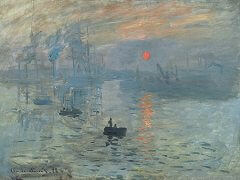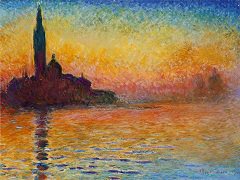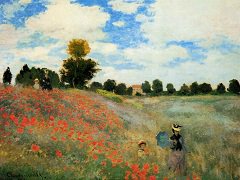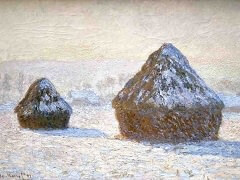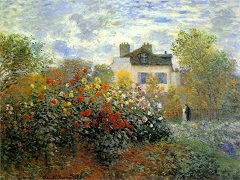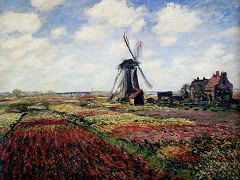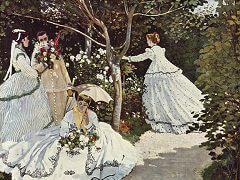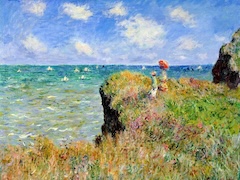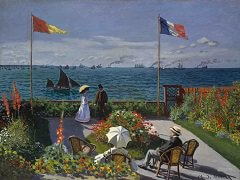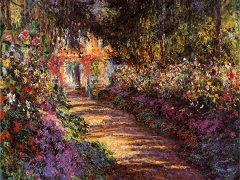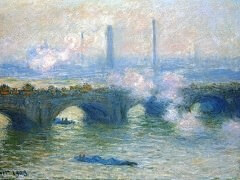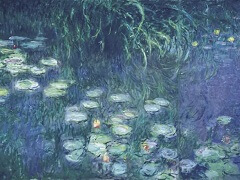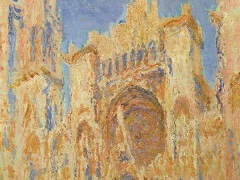Customs Officers's Hut at Varengeville, 1882 - by Claude Monet

Monet spent much of 1882 travelling the Normandy coastline from Dieppe to Pourville, and spent considerable lime painting the dazzling cliffs around the small village of Varengeville. This tiny fishing village sits atop sublime chalk cliffs that Monet focused intently on, producing a large number of paintings of the location from slightly different angles, in varying weather and different limes of the day. He was particularly fascinated by VarengevilleJ s medieval church, which he painted seven limes, and by the tiny customs officers' cabin that, from certain angles appeared to cling perilously to the vertiginous cliffs.
He painted this little cabin a number of times from different viewpoints: sometimes it appears secured in the rocky landscape, while at others it seems to defy its sleep location. In these paintings he has tended to reduce the compositional elements to a simple structure, often recalling Japanese woodcuts, and has concentrated on producing the effect of atmosphere, weather and light. These compositions are daring and innovative, producing unusual scenes of simple, geometric shapes and stunning visual effects, which are both dramatic and often exhilarating.

